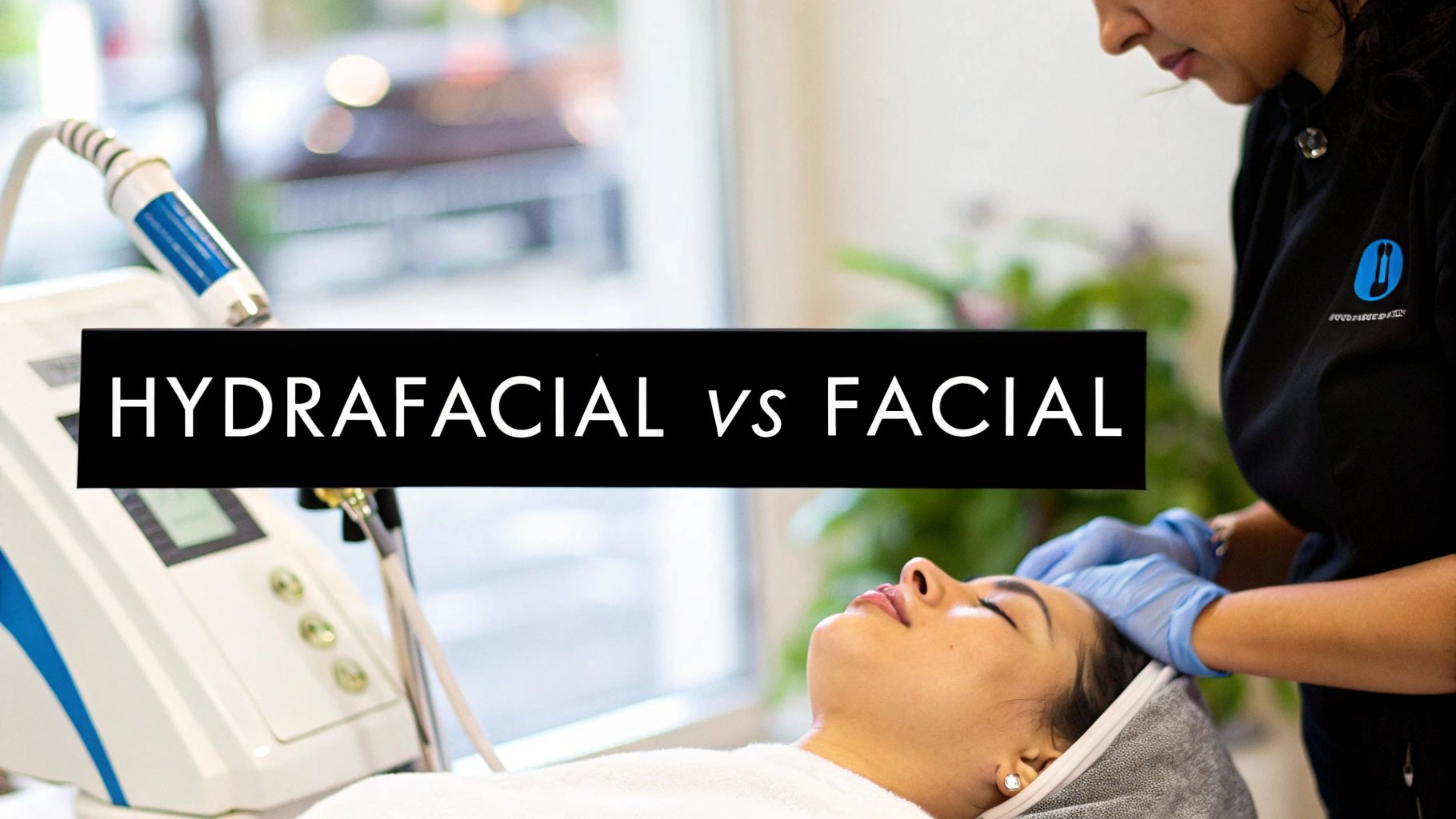
October 12, 2025
Anesthesia Types for Surgery A Patient's Guide
Discover the main anesthesia types for surgery. This guide explains general, regional, local, and sedation to help you prepare for your procedure.
Aug 24, 2025

The hands often reveal signs of aging sooner than other parts of the body, showing volume loss, prominent veins, wrinkles, age spots, and skin thinning. These visible changes can age a person's appearance despite a youthful face. Fortunately, today's cosmetic advancements offer numerous effective and minimally invasive options to restore a youthful look to aging hands. This article explores available hand rejuvenation treatments, the science behind them, candidacy, results, and recovery to help readers understand how to turn back the clock on their hands.

Hand aging is driven by a mix of natural biological processes and environmental factors. Intrinsic aging involves a decline in collagen and elastin production, leading to thinner, less elastic skin that becomes wrinkled and crepey. Cellular aging also contributes to decreased skin resilience and regeneration.
On the other hand, extrinsic factors such as sun exposure, pollution, and environmental damage accelerate aging signs. Ultraviolet (UV) rays break down skin fibers, causing age spots, uneven pigmentation, and dark spots. Continuous exposure can also make veins and tendons more prominent as the skin thins.
Common signs of aging hands include wrinkles, volume loss which exposes underlying bones and tendons, age spots, prominent veins, and dull, uneven skin texture. These changes can make hands look significantly older.
Treatments aim to counteract these effects by stimulating collagen and elastin production to improve skin firmness and texture. Dermal fillers, often hyaluronic acid-based, are injected to restore lost volume and smooth out wrinkles, reducing the prominence of veins and tendons. Laser therapies like fractional CO2 or IPL target pigmentation irregularities and stimulate new collagen growth for a more even skin tone and improved texture.
Chemical peels and topical agents, such as retinoids and antioxidants, enhance skin renewal and hydration. Laser resurfacing removes damaged outer layers, reducing age spots and refining skin quality. Protective measures, including consistent sun protection, moisturization, and avoiding environmental damage, further help maintain the youthfulness achieved through these treatments.

Hand rejuvenation incorporates various techniques tailored to address the specific signs of aging on the hands. Laser resurfacing, such as fractional CO2 and erbium lasers, plays a pivotal role by stimulating collagen production, which helps tighten skin, reduce wrinkles, and diminish age spots. Chemical peels utilize ingredients like glycolic acid or TCA to remove the damaged outer skin layers, lightening dark spots and improving overall texture.
Microdermabrasion is used for superficial exfoliation, revealing brighter, smoother skin. Dermal fillers, containing substances such as Radiesse or hyaluronic acid derivatives, are injected to restore volume, hide prominent veins, and soften wrinkles. These fillers provide immediate results and help enhance hand contours.
Fat transfer is another option, involving the harvesting of your own fat from other parts of your body through liposuction and injecting it into the hands for a more permanent volume boost. For visible veins, sclerotherapy or endovenous laser treatments effectively reduce their appearance.
In addition to these procedures, topical treatments with retinoids, antioxidants, and peptides support ongoing skin health by promoting collagen synthesis and protecting against environmental damage.
Many patients benefit from combining these methods, relying on laser treatments to improve skin texture and pigmented spots, while fillers restore volume and smoothness. The goal is to achieve a natural, youthful appearance by addressing multiple aging signs simultaneously.

Hand rejuvenation involves a variety of treatments tailored to improve the appearance of aging hands. Injectable dermal fillers such as Restylane Lyft and Radiesse are among the most popular options. These fillers, often hyaluronic acid-based, restore lost volume, smooth out wrinkles, and hide prominent veins or tendons. Radiesse, a calcium hydroxylapatite filler, stimulates collagen production for longer-lasting effects.
In addition to fillers, fat transfer is a highly effective, more permanent technique. It involves harvesting fat from another part of the body, processing it, and then reinjecting it into the hands. This method provides natural volume restoration and can last for years.
Laser therapies also play a significant role. Fractional CO2 lasers, Fraxel, and IPL (Intense Pulsed Light) treatments are used to address sun damage, age spots, and uneven skin tone. These laser procedures stimulate collagen growth, improving skin elasticity and texture.
Chemical peels, typically containing glycolic acid or TCA, are applied to lighten dark spots and refine skin surface irregularities. Microdermabrasion, a non-invasive exfoliation process, helps remove dead skin cells, offering a brighter, smoother look.
Finally, vein treatment options such as sclerotherapy or endovenous laser treatment can reduce visible veins, complementing volume or skin improvements. Topical creams enriched with retinoids, antioxidants, and sunscreen are also used to maintain and extend treatment benefits.
These treatments can be combined or tailored depending on the individual’s skin condition, aging signs, and desired outcomes. Consultation with a qualified professional is essential to determine the most effective approach for each person.

Ideal candidates are adults experiencing signs of aging in their hands, such as volume loss, wrinkles, prominent veins, crepey or thin skin, and age spots caused by sun exposure. Typically, individuals in their 40s or older seek treatment, but younger adults with significant sun damage or skin thinning can also benefit.
Good overall health is crucial for safe and effective outcomes. Candidates should not have contraindications such as bleeding disorders, severe allergies, or be pregnant or breastfeeding.
A realistic outlook on what the treatments can achieve is important. Patients should understand that results can vary and may require maintenance sessions every 6 to 12 months.
Before any procedure, a detailed consultation with trained professionals helps determine the best approach customized to individual needs, ensuring safety and satisfaction. This process involves assessing skin condition, health history, and aesthetic goals.
By choosing suitable candidates, hand rejuvenation procedures can effectively restore a more youthful and vibrant appearance, reducing signs of aging and improving confidence.
For more details, searching

Hand rejuvenation treatments aim to produce hands that look smoother, fuller, and more youthful. They effectively address common signs of aging such as wrinkles, loss of volume, age spots, and prominent veins. Patients typically see immediate results from dermal fillers, with fuller and hydrated hands becoming noticeable shortly after treatment. Over the following weeks, improvements in skin texture and pigmentation from laser therapies become more evident. The longevity of results varies: fillers may last from six months to a year, while laser procedures and chemical peels can provide lasting benefits with proper maintenance. Combining different treatments allows for comprehensive rejuvenation, tackling both volume deficiency and skin quality. Overall, patients enjoy improved confidence and a more attractive hand appearance with minimal downtime.
Hand rejuvenation offers notable benefits, including reduction of wrinkles, improvement in skin pigmentation, and restoration of lost volume. Procedures like laser resurfacing stimulate collagen production, encouraging skin tightening and a more even tone. Injectable fillers, often hyaluronic acid-based, provide immediate volume, softening the look of veins and tendons.
These treatments are minimally invasive and generally safe, with low risks of side effects such as mild swelling or redness that usually resolve quickly. As these methods stimulate natural collagen growth, their effects are sustained over months to years, making them a cost-effective way to maintain youthful hands.
Research and clinical experience support the effectiveness of these techniques, delivering long-lasting, natural-looking results. Patients report newfound confidence following treatment, appreciating the reduced signs of aging and refreshed skin texture.
Different treatments offer varying advantages for restoring youthful hands. Dermal fillers provide predictable, immediate results with longevity of approximately 6 to 12 months. They are suitable for quick enhancement with minimal downtime and are easily combined with other procedures.
Fat transfer offers a more permanent solution by using your own body fat to restore volume. Although more invasive, it feels natural and can last several years, making it a good choice for those seeking long-term results.
Laser therapies, such as fractional CO2 or IPL, improve skin quality by reducing pigmentation issues, age spots, and fine lines. When used alongside fillers, they produce the most comprehensive rejuvenation.
Ultimately, the choice depends on individual factors like severity of volume loss, skin laxity, health status, and preferences for invasiveness and longevity. Combining treatments often yields the best overall improvement, addressing multiple aspects of aging hands.
Following hand rejuvenation procedures, the recovery process is generally smooth with mild, temporary side effects such as swelling, redness, bruising, or tenderness. These symptoms typically fade within a few days to a week. To support healing, it is recommended to avoid applying pressure or engaging in strenuous activities on the treated hands.
Patients should use cold compresses to minimize swelling and keep the skin moisturized with appropriate skincare products. Sun protection is crucial; applying broad-spectrum sunscreen helps prevent further sun damage and hyperpigmentation. Additionally, avoiding alcohol, smoking, and excessive heat exposure in the initial recovery phase can enhance results.
Regular follow-up appointments with the provider are important to monitor progress, address any concerns, and ensure proper healing. Maintaining a consistent skincare routine, including the use of sunblock and rejuvenating topical treatments, can prolong and improve the outcomes of hand rejuvenation treatments.
Advancements in hand rejuvenation offer safe, effective, and customizable options to combat the visible signs of aging hands. From laser therapies and chemical peels to injectable fillers and fat transfers, individuals can achieve smoother, more voluminous, and radiant hands. Identifying the right candidate and combining treatments tailored to specific concerns maximizes outcomes with minimal downtime. Proper aftercare and sun protection extend the youthful appearance, allowing individuals to genuinely turn back the clock on their hands and restore confidence in this often-exposed part of their body.

October 12, 2025
Discover the main anesthesia types for surgery. This guide explains general, regional, local, and sedation to help you prepare for your procedure.

October 11, 2025
Learn the key differences between hydrafacial vs regular facial to choose the right treatment for glowing, healthy skin. Read our expert guide now!

October 10, 2025
Explore the best treatments for sagging skin, from non-invasive to surgical options. Find the perfect solution to restore your youthful appearance.